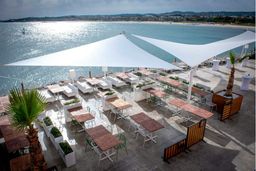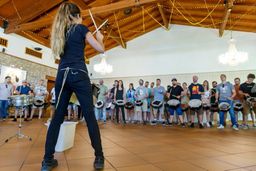Blog

Steps to follow in the Biosphere certification process
Currently, sustainability is a critical issue across various aspects of life, including corporate and social events. The increasing awareness of the environmental and social impacts of our actions has led to a significant shift in how we plan and execute events. In this context, the Biosphere Certificate has emerged as a gold standard for those striving to organize events sustainably and responsibly.
What is the Biosphere Certificate?
The Biosphere Certificate stands as an international recognition of an organization's dedication to sustainability across all its operations. Grounded in the principles of sustainable development, it encompasses environmental, social, and economic dimensions. To attain this certification, organizations must meet a series of stringent criteria and commit to ongoing improvement, spanning areas like waste management, energy efficiency, social inclusivity, and respect for local cultures.
Is the Biosphere certification important for our clients?
Sustainability has become a crucial consideration for many clients and companies today. That's why we've spent months working to obtain the Biosphere certification, which validates our dedication to ethical and sustainable practices. This journey isn't undertaken alone; we're also encouraging all our suppliers to seek this distinction. By doing so, we're contributing to the development of a more sustainable network across the events industry. Currently, Destination Barcelona proudly hosts over 1,000 companies with Biosphere tourism sustainability certification.
The path to Biosphere Certification: key steps we followed
1. Research and awareness: Prior to commencing the certification process, we invested time in comprehending the principles and requisites of the Biosphere Certificate. We delved into integrating sustainability into our operations and fostered awareness of its significance.
2. Impact assessment: Conducting a comprehensive evaluation of our environmental, social, and economic footprints was essential. We identified areas necessitating enhancement and established clear, measurable objectives to mitigate negative impacts while maximizing positive contributions.
3. Strategic planning: Detailed strategic planning was pivotal in executing sustainability measures across our operations. This entailed resource allocation, defining responsibilities, and establishing a timeline to meet our objectives.
4. Implementation of measures: Executing a range of sustainability measures, including energy conservation, waste management optimization, diversity promotion, and community support, was crucial.
5. Training and awareness: We educated our team on sustainability matters, fostering an organizational culture centered on environmental and social responsibility. Additionally, we raised awareness about sustainability's importance among our clients and suppliers.
6. Continuous monitoring and evaluation: Establishing a robust monitoring and evaluation system enabled us to track progress and make necessary adjustments. This facilitated the identification of areas for improvement and showcased our dedication to continual enhancement.
7. Attaining the Biosphere Certificate: Upon completing the aforementioned steps and meeting certification criteria, we underwent official evaluation to obtain the Biosphere Certificate. This certification validates our sustainability commitment and positions us as industry leaders in environmental and social responsibility, embracing principles of regenerative tourism.
By adhering to these steps, The Green Vintage Events successfully attained the Biosphere Certificate, cementing our status as a sustainability-committed company. We contribute to environmental preservation and community well-being, thereby making a positive impact in the regions we operate.






